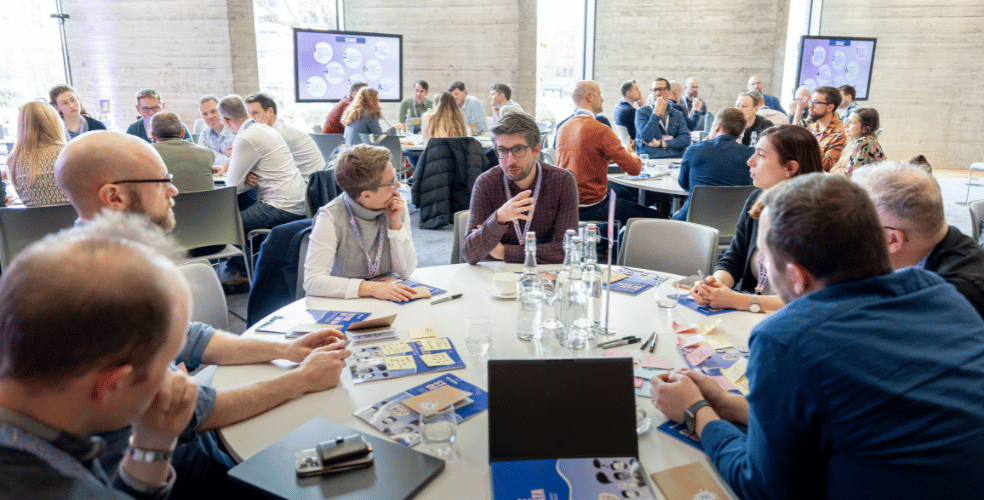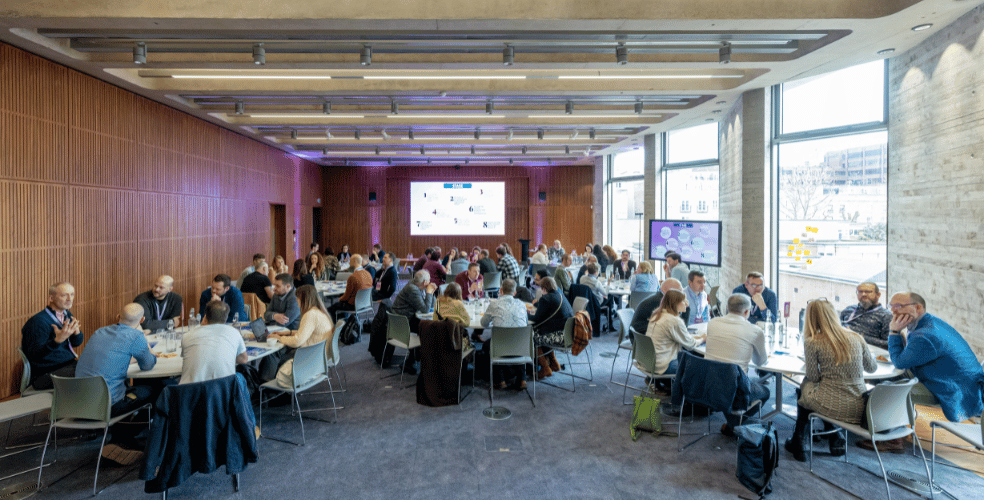Government services should work together seamlessly, putting users at the heart of delivery. But too often, people and businesses find themselves navigating a complex maze of disconnected services. Whether it’s an individual managing a long-term health condition or a small business trying to stay afloat, the burden of navigating government systems often falls on those who need support the most.
At our recent Digital Forum, we took this critical issue head-on. Our guest speakers—Anais Reding, Chief Digital Officer at the Department for Business and Trade (DBT), and Eleanor Stephens, Service Owner at Government Digital Services (GDS)—shared their perspectives on the challenges and opportunities of designing and delivering truly cross-cutting government services.
A vision for joined-up public services
The conversation centred around the government’s Blueprint for Modern Digital Government, which sets out a bold ambition to make public services more connected, user-focused, and proactive.
"I was really excited to see the Blueprint for Modern Digital Government. It was really setting a vision that was kind of bigger than GDS itself, and it was sufficiently specific on the what as well."Anais Reding
Anais Reding, Chief Digital Officer, Department for Business and Trade
For the first time, businesses are being recognised as key users of government services, with a renewed focus on making interactions easier, particularly for small businesses. There is also a need for a holistic approach when it comes to citizen services. One which understands that someone may apply for Universal Credit in the morning, but in the afternoon, they might be doing something which is also related to being out of work and needing support from government. This requires government to see that person’s whole journey, rather than treating each service as an isolated transaction.
The barriers to cross-cutting services
Despite the ambition, significant structural barriers stand in the way of real progress. Funding silos, inconsistent data, misaligned incentives, and outdated legacy systems all make it difficult to create truly integrated services.
One of the biggest challenges is accountability. There needs to be an alignment of incentives across departments so that we can keep prioritising the same problem for long enough to make a difference. This is particularly crucial when it comes to securing long-term investment.
Another key barrier is the disconnect between digital and policy teams. Often, brilliant initiatives that come out of digital get stuck because they stay within digital teams. Similarly, policies are designed without considering how they will actually be delivered. Closing this gap is essential if digital transformation is to move beyond rhetoric and into reality.
What needs to change?
Our discussion made clear that the current system is not set up for success. If government is serious about delivering joined-up services, three key shifts need to happen:
-
Stronger leadership and accountability – Government needs a mechanism to hold departments to account for delivering cross-cutting services. We need more than a coalition of the willing. Someone needs to own this.
-
A new approach to funding – True service integration requires aligned budgets which prioritise transformation over maintaining the status quo.
-
Embedding digital thinking into policy – Digital can’t be an afterthought. Digital teams need to get better at operating in a policy environment, and policy staff need to get better at working in a digital one. The future of government depends on bridging this gap.
The way forward
While the challenges are real, the conversation left us with a sense of momentum. With the new Digital Centre in the refreshed Government Digital Service, there is fresh energy behind the push for transformation. Some of this work is already happening with the current initiative to bring together expertise from across GDS, the Central Digital and Data Office, and the AI Incubator.
"It’s really exciting to be part of that kind of coming together, of all of these organisations, under the umbrella of DSIT and forming this new Digital Center as part of that department."
Service Owner, Government Digital Services
The question now is how to ensure this work translates into lasting change. To do this, we need to keep creating exemplars—real examples that show what the future of government can look like. But we also need to shape government structures and incentives so that this model of delivery not only exists in exemplary cases with huge resources and expertise behind them but also becomes the default delivery model for service teams.
Creating joined-up, user-focused government services is not easy, but the opportunities to create real, lasting change are within reach. Every conversation, every initiative, every small step towards collaboration between departments, strengthens the foundation for a public sector that truly works for everyone.
Thank you to our speakers and everyone who attended. If you're interested in attending one of our events keep an eye out for our next Digital Forum.

Building better public services with service patterns
As part of Services Week 2025, we explored how service patterns can create more consistent, efficient, and user centred services.
Read moreOur recent insights
Transformation is for everyone. We love sharing our thoughts, approaches, learning and research all gained from the work we do.
-

-

Designing cross-cutting public services
Read insight -

Shaping the future of data in government
Read insight -

Transforming data, trust and public services
Read insight

